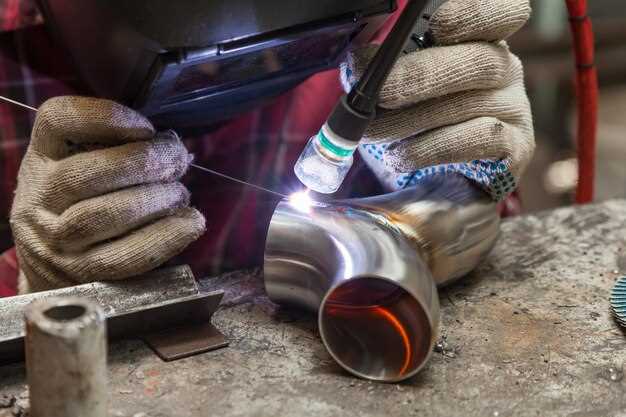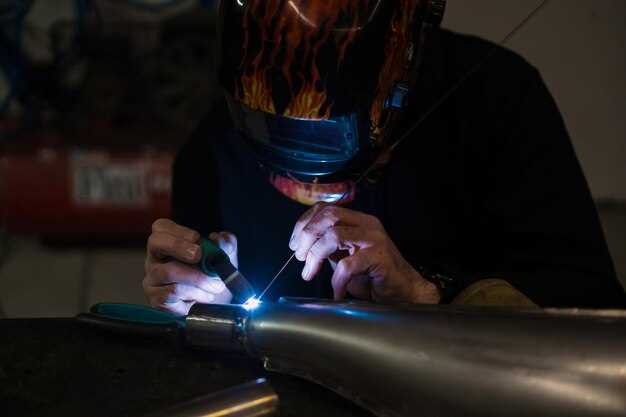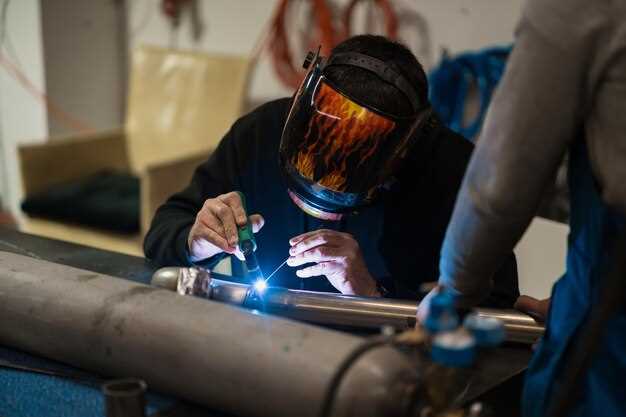
Welding is a crucial skill in the automotive industry, enabling the creation, repair, and enhancement of vehicles. Understanding the fundamentals of welding can significantly improve the quality of automotive projects, whether you are a hobbyist or a professional mechanic. It involves a variety of processes and materials, each suited to different applications and outcomes.
At its core, welding is the technique of joining two or more metal pieces by melting them together and allowing them to cool, forming a strong bond. The selection of welding methods–such as MIG, TIG, or stick welding–depends on the specific requirements of the project, including the type of metals involved and the desired strength of the joint. Each method has its own set of advantages and challenges that must be considered carefully.
Additionally, mastering the fundamentals of welding involves not only technical knowledge but also safety awareness. Proper protective gear and safety practices are essential to prevent injuries and ensure a safe working environment. Anyone engaged in automotive welding projects should be familiar with the potential risks associated with high temperatures, toxic fumes, and electrical hazards.
In this article, we will explore the essential aspects of welding necessary for automotive projects, from selecting the right equipment to understanding various welding techniques and safety protocols. By grasping these fundamentals, you can enhance your skills and ensure the success of your automotive endeavors.
Choosing the Right Welding Technique for Various Automotive Materials

When working on automotive projects, selecting the appropriate welding technique is crucial for ensuring structural integrity and performance. Different automotive materials require specific welding methods to achieve optimal results. This section will cover the most commonly used materials in the automotive industry and the corresponding welding techniques.
Steel remains one of the most prevalent materials in automotive manufacturing due to its strength and durability. For welding steel, techniques such as MIG (Metal Inert Gas) and TIG (Tungsten Inert Gas) are often employed. MIG welding is ideal for thicker sections and faster production speeds, while TIG welding is better suited for thinner materials and provides higher precision. Both methods require careful selection of filler materials to match the base metal properties.
Aluminum is increasingly utilized in the automotive sector because of its lightweight characteristics, contributing to improved fuel efficiency. Welding aluminum requires different considerations. The most effective methods include TIG and MIG welding, with specialized aluminum filler rods. TIG welding is preferred for critical joints due to its ability to produce clean, high-quality welds, while MIG welding allows for faster processing in less critical applications.
For advanced high-strength steels (AHSS), which are designed to withstand rigorous stress and enhance vehicle safety, techniques like laser welding and spot welding are commonly used. Laser welding provides deep penetration and minimal distortion, making it ideal for intricate designs and thin materials. Spot welding is often utilized in assembly processes for joining sheet metal components quickly and efficiently.
Composite materials, often found in modern automotive applications, present unique welding challenges. Traditional welding techniques may not be suitable due to differing thermal properties. Instead, advanced bonding methods such as ultrasonic welding or adhesive bonding are recommended. These techniques achieve strong joints without the risk of compromising material integrity.
In conclusion, understanding the properties of various automotive materials and their compatibility with different welding techniques is essential for successful project execution. Ensure to choose the right method based on the specific material, desired strength, and quality standards to achieve optimal results in your automotive welding endeavors.
Essential Safety Gear and Best Practices in Automotive Welding

Welding in automotive projects requires strict adherence to safety protocols to ensure both the welder’s protection and the integrity of the work. Wearing the appropriate safety gear is critical in preventing injuries caused by sparks, heat, and harmful fumes.
Essential safety gear includes:
- Welding helmet: A high-quality welding helmet protects the face and eyes from bright sparks and ultraviolet light. Choose a helmet with an appropriate shade for your specific welding method.
- Protective clothing: Flame-resistant clothing made of materials like cotton or leather should be worn. Jackets and pants must fit well to avoid sparks getting trapped inside.
- Gloves: Heavy-duty leather gloves are essential to protect hands from burns and cuts. Ensure gloves fit securely to maintain dexterity while working.
- Respirators or masks: Depending on the welding process, a respirator may be necessary to filter harmful fumes and particulate matter. Always ensure proper ventilation in the workspace.
- Safety boots: Steel-toed safety boots protect the feet from heavy objects and sparks. Ensure they are slip-resistant to prevent accidents.
In addition to safety gear, following best practices during automotive welding is crucial:
- Pre-welding inspection: Inspect the equipment and workspace before starting a project. Ensure that the welding machine functions properly and that the workspace is free of flammable materials.
- Proper ventilation: Always weld in an area with good airflow. If indoor welding is unavoidable, use exhaust fans to draw away fumes.
- Work posture: Maintain a comfortable and stable working position to minimize fatigue and enhance control over the welding tool. This helps to prevent mishaps.
- Fire safety: Keep a fire extinguisher nearby and know how to use it. Establish a fire watch if working in areas where flammable materials are present.
- Follow procedures: Always adhere to established welding procedures and guidelines to avoid accidents and ensure high-quality welds.
By utilizing the proper safety gear and following effective practices, automotive welders can significantly reduce the risks associated with their craft. Prioritizing safety not only protects individuals but also ensures the longevity and quality of projects undertaken.
Common Welding Defects and How to Prevent Them in Fabrication
When it comes to welding in automotive projects, understanding common defects is crucial for achieving high-quality results. Several issues can arise during the welding process, leading to weak joints or structural failures. Identifying these defects and implementing preventive measures is essential for successful fabrication.
One of the most prevalent defects is porosity, which appears as small holes or pockets within the weld metal. This defect is often caused by contaminants in the base material or improper shielding gas coverage. To prevent porosity, ensure the surfaces are clean and free of oil, rust, or moisture before welding. Additionally, maintaining proper gas flow rates can help shield the weld pool from atmospheric contamination.
Another common issue is undercutting, which occurs when the base metal is eroded at the weld edges, leading to reduced joint strength. This problem can be attributed to excessive heat input or incorrect welding technique. To avoid undercutting, control travel speed and ensure the correct amperage settings are used for the material thickness involved.
Cracking is a defect that can manifest during or after the welding process, often due to high thermal stresses or improper joint design. To minimize the risk of cracking, preheat thicker materials and employ appropriate filler materials. Post-weld heat treatment may also be beneficial in relieving residual stresses.
Lack of fusion is another serious defect that occurs when the weld metal does not properly bond to the base metal. This can result from inadequate heat input or incorrect welding angles. To prevent lack of fusion, ensure proper joint preparation and use the correct electrode or filler material, along with maintaining an optimal travel angle and speed during the welding process.
Finally, distortion can impact the alignment of fabricated parts, making assembly difficult. To minimize distortion, consider using jigs or fixtures to secure components during welding. Employing a controlled cooling process can further help maintain the integrity of the welded parts.
By being aware of these common welding defects and implementing effective prevention strategies, welders can enhance the quality and reliability of their automotive projects, ensuring safer and more durable fabrications.




